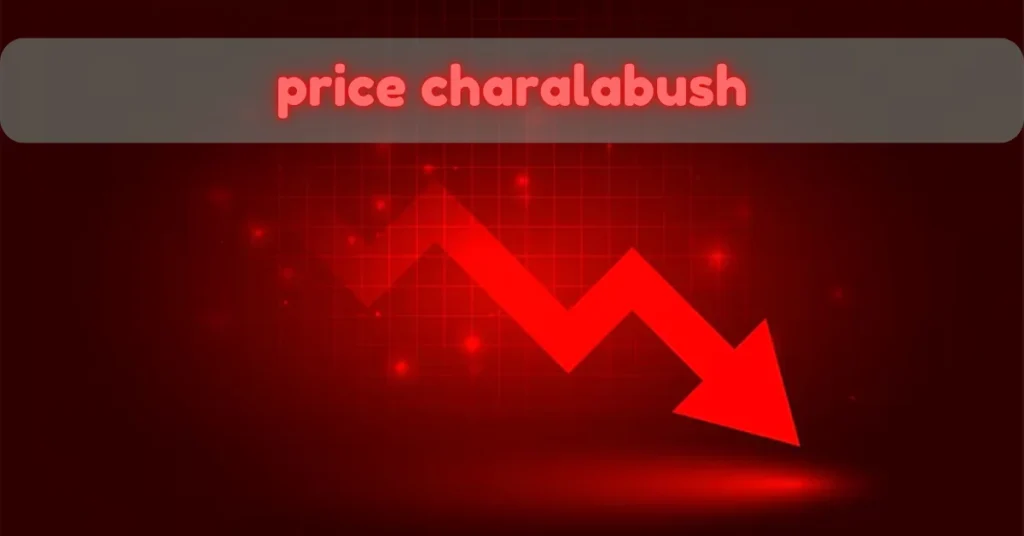Introduction to Price Charalabush
What is Price Charalabush?
“Price Charalabush” might sound like a buzzword from a sci-fi flick, but it’s actually a rising concept in the world of pricing psychology. It refers to a clever strategy used by businesses to subtly influence how we perceive the cost of something — often making us feel like we’re getting more value than we actually are.
The Origin and Rise of the Term
Though relatively new, the term has gained traction thanks to behavioral economists and digital marketers who noticed patterns in consumer decisions linked to pricing structure, not just the number on the tag. “Charalabush” symbolizes a mix of logic and emotional appeal baked into pricing.
Why Everyone’s Talking About It
Because it works. From small online shops to billion-dollar brands, everyone is using some form of Charalabush pricing. And as consumers, we’re affected by it every day — often without even realizing it.
Understanding the Psychology Behind Price Charalabush
How Consumers Perceive Value
We don’t just look at prices—we feel them. The number $4.99 feels cheaper than $5.00. That’s not just marketing magic; it’s neuroscience. Price Charalabush leans heavily on this emotion-logic split in our brains.
The Role of Anchoring and Framing
Anchoring is when you’re shown a $2000 product first, so that a $500 item looks like a steal. Framing is when “only $29.99/month” feels better than “$359.88 per year.” Charalabush strategies exploit these psychological quirks to nudge us toward a purchase.
Charalabush vs Traditional Pricing Models
Unlike traditional cost-plus pricing, which focuses on profit margins, Charalabush pricing is value-centric and emotional. It’s less about what it costs to make, and more about how it makes you feel when you see it.
The Impact of Price Charalabush on Consumer Behavior
Emotional Triggers in Buying Decisions
Ever bought something just because it “felt like a good deal”? That’s Charalabush in action. By activating emotions like excitement, urgency, or exclusivity, this method gets into our wallets through our hearts.
Perceived Fairness and Trust
When done right, this pricing builds trust. Think of “pay what you want” campaigns or transparent subscription models — they use Charalabush principles to make consumers feel respected, not tricked.
Case Studies of Real-World Use
Apple’s pricing of the iPhone SE as a “budget premium” phone or Amazon’s lightning deals are examples where Price Charalabush thrives — blending quality cues with urgency and relativity.
How Marketers Use Price Charalabush
Techniques to Influence Purchase Intent
Flash sales, bundle offers, countdown timers — all designed to shift perception. By emphasizing scarcity, urgency, or limited-time deals, marketers tap into FOMO (fear of missing out).
Creating a Psychological Advantage
The goal is to create a moment where the buyer thinks, “I’d be stupid not to buy this.” It’s less about cost and more about perceived opportunity.
Storytelling and Charalabush Pricing
Good marketers wrap prices in stories. “This handcrafted leather bag supports local artisans and costs less than a dinner out.” Boom. Now it’s personal.
Price Charalabush in E-commerce and Retail
Online Shopping Trends
E-commerce platforms love Charalabush tactics. Personalized discounts, abandoned cart nudges, and dynamic pricing are all based on what feels right to the shopper in that moment.
Behavioral Targeting and Personalization
Your browsing history, click patterns, and even how long you stare at a product image can trigger a Charalabush-style pricing tweak just for you.
Examples from Major Brands
Think Netflix’s tiered pricing or Uber’s surge model. These aren’t just numbers — they’re carefully engineered experiences using the Charalabush mindset.
Ethical Considerations of Charalabush Pricing
When Is It Manipulation?
There’s a thin line between persuasion and manipulation. Using emotion is fine — unless it’s misleading. Transparency is key.
Transparency vs Tactics
Being upfront about pricing logic builds long-term trust. Hiding fees or using dark patterns breaks it. Brands that balance the two win customer loyalty.
Consumer Protection Insights
As regulators catch on, we may see rules around how pricing is framed, especially in online platforms. Ethics will play a bigger role going forward.
Tips for Consumers to Outsmart Charalabush Pricing
Spotting the Signs
Look for emotional triggers. Is there a countdown? A “one left in stock” alert? Those are classic Charalabush tactics.
Asking the Right Questions
Ask yourself: Would I still buy this at full price? Is this deal real or designed? If you pause, you’re already ahead.
Smart Decision-Making Habits
Use price trackers, compare across platforms, and sleep on it before impulse buying. Knowledge weakens Charalabush’s grip.
The Future of Price Charalabush
AI and Predictive Pricing
As artificial intelligence gets smarter, expect Charalabush tactics to get even more precise — custom prices for individual users based on behavior predictions.
Evolving Consumer Awareness
The good news? Consumers are getting smarter too. Tools, communities, and forums are helping shoppers recognize and respond to these tactics.
Regulation and Standards
Governments may step in soon to enforce price transparency and curb manipulation, especially in digital marketplaces.
Conclusion
Price Charalabush isn’t just a trend — it’s a transformation in how we understand pricing and value. It blurs the line between logic and emotion, making us believe we’re in control, even when we’re being subtly nudged. While it can enhance shopping experiences, it also demands that we stay informed and mindful. As the digital marketplace evolves, so will these tactics — and so should our awareness. Remember: when something feels like a deal, take a moment to think before you click “buy now.”






